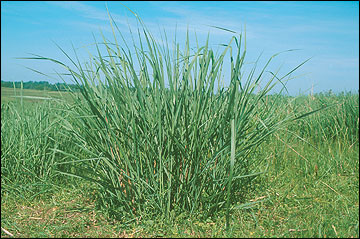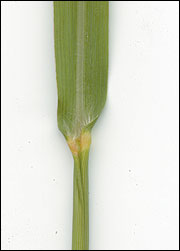Switchgrass (Panicum virgatum L.)
Warm-season grasses
Switchgrass is a native, perennial warm-season grass grown on an estimated 1 million acres in Missouri. Although its greatest use is for pasture, it is also widely used for hay production, soil conservation and wildlife habitat. Switchgrass tolerates poorly drained soils fairly well and is adapted to a wide range of growing conditions. It is easier to establish than many other warm-season grasses. Switchgrass dominates in the early years of establishment of mixed native warm-season grass plantings but declines after 10 to 12 years. Switchgrass must be grazed early in the season or the grass easily becomes overmature and of poor quality. Switchgrass is useful if grazing begins early in the season and it is kept in a vegetative stage of growth.
 Switchgrass
Switchgrass
 Yield distribution of switchgrass in Missouri.
Yield distribution of switchgrass in Missouri.
- Origin: North America
- Adaptation to Missouri: Statewide
- Growth habit: Tall, rhizomatous, perennial bunchgrass.
- Blade: Elongated, flat, rough margins, and a triangular patch of hair at base of upper surface.
- Sheath: Round, smooth, split, shorter than internodes, often red or purplish at base.
- Ligule: A dense ring of hair.
- Auricles: Absent.
- Seed head: Open, diffuse panicle, usually 1⁄3 to ½ as wide as long.
- Fertilization: 40 to 60 lb N/acre when grass is 3 to 5 inches tall. Phosphorus and potassium to soil test.
- Burning management: Every year or two, when new growth is 1 to 2 inches tall.
- Timing of production: Produces 40 percent of its growth in June, two to three weeks earlier than big bluestem.
- When to begin grazing: When grass is 10 to 12 inches tall.
- When to cut for hay: Late vegetative to early boot stage.
- Lowest cutting or grazing height: 6 inches Fall management: Do not hay or graze after Sept. 1.

